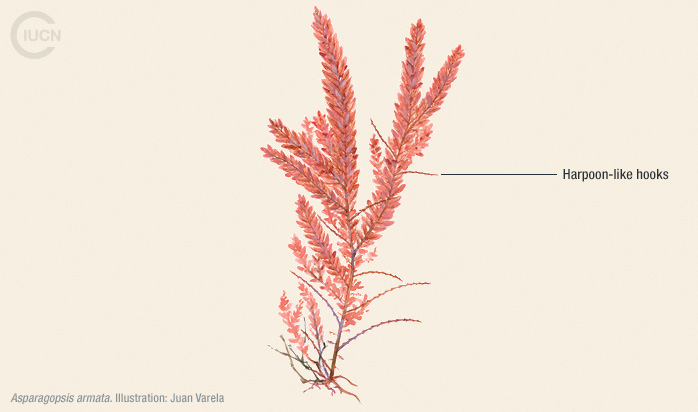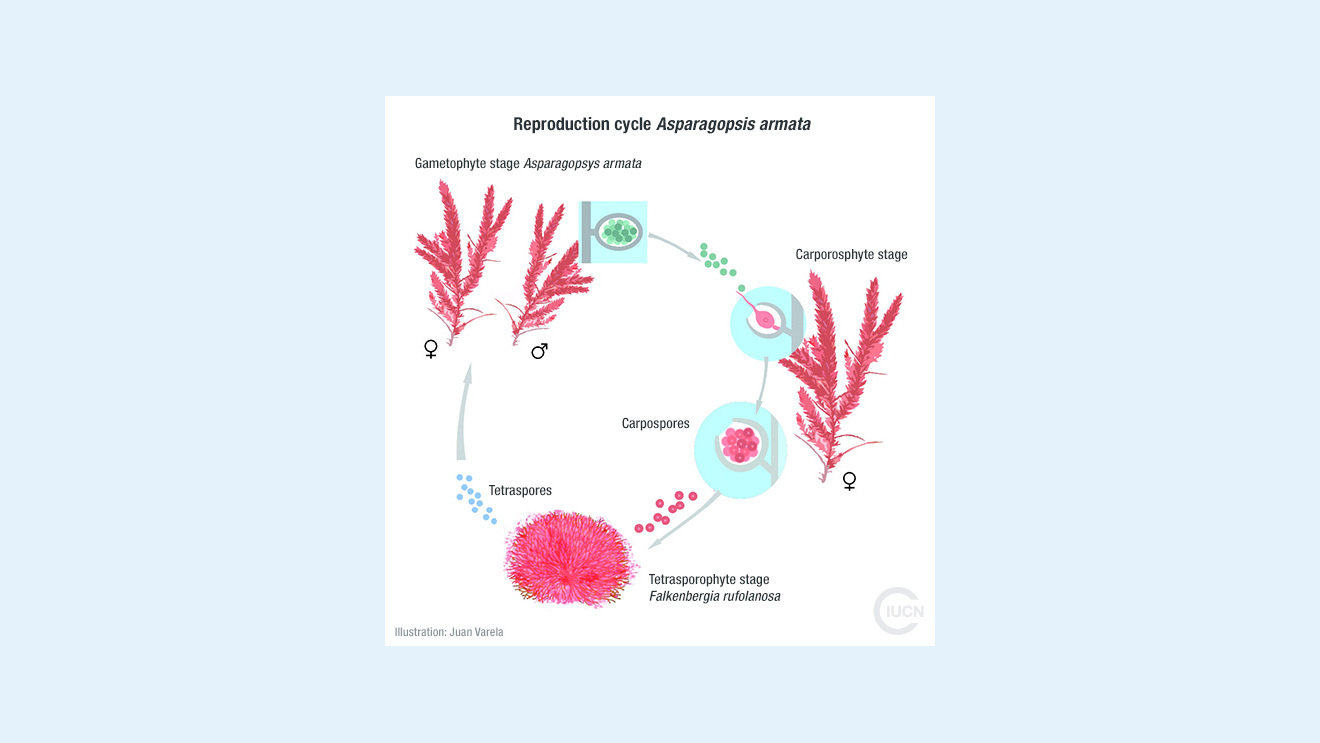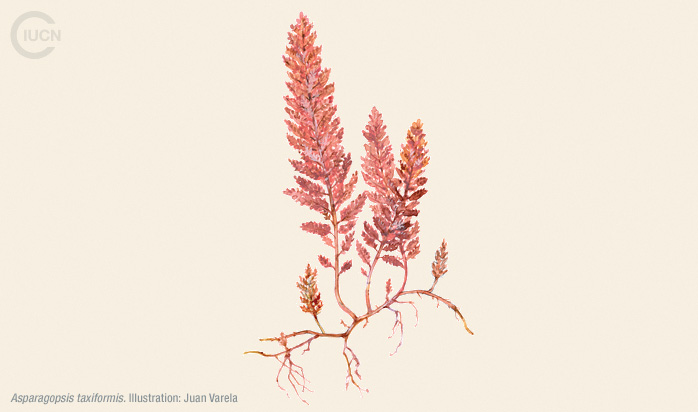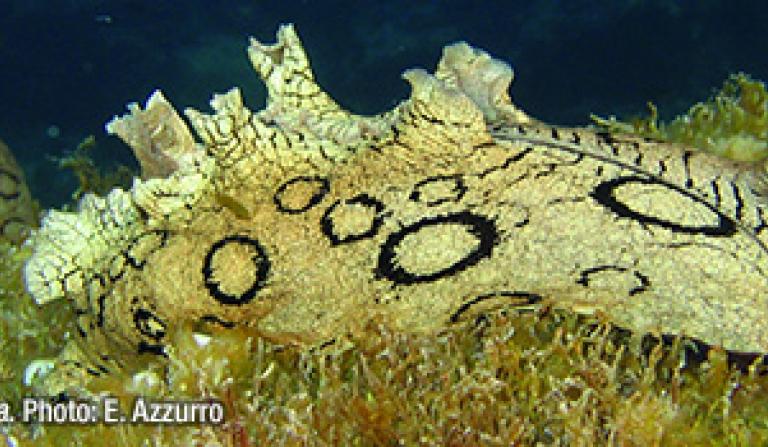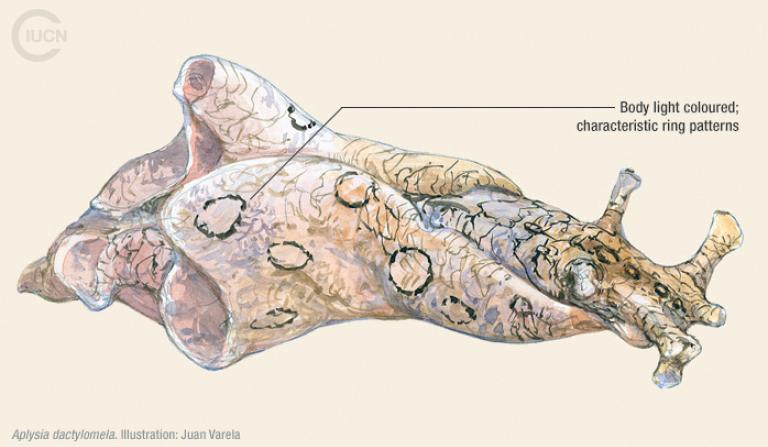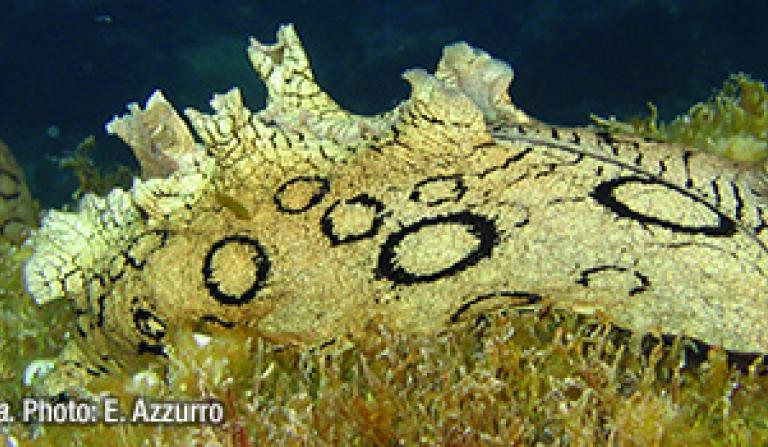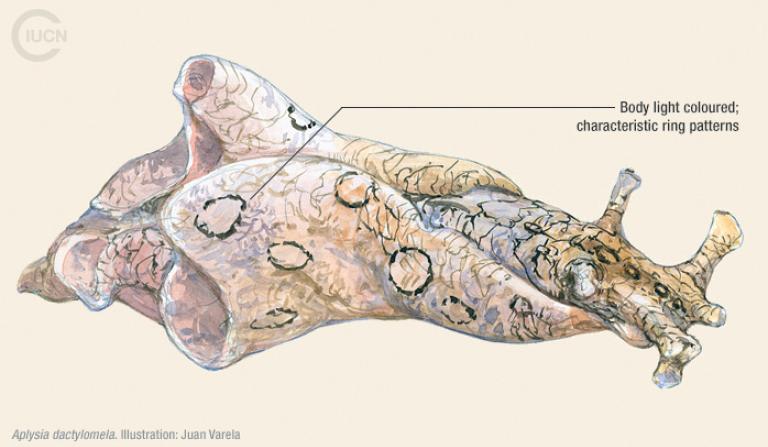Asparagopsis armata
Information
The gametophyte stage is pale purplish-red, quickly degenerating when removed from the water and becoming distinctly orange. It can be found growing as an epiphytic alga on other algal species, especially Corallina sp. The tetrasporophyte stage is a brownish-red, filamentous, branched alga, forming dense cotton-wool-like tufts 15 mm in diameter.
Usually this alga develops on infralittoral rocky bottoms from the surface to a depth of 40 m.
It is able to reproduce sexually and has a two-phase (heteromorphic diplohaplontic) life cycle with two main morphologically different stages during its development. The gametophyte phase, which was the form named Asparagopsis armata, has either male or female organs; this is followed by a microscopic carposporophyte middle stage, and then by the tetrasporophyte phase, which was originally named Falkenbergia rufolanosa. The gametophyte and sporophyte stages are also capable of reproducing vegetatively. Drifting gametophytes readily attach to other algae by barbed branchlets and produce new shoots. ‘Falkenbergia’ also disperses by flotation.
Gametophytes of Asparagopsis armata can be easily misidentified as another successful invader, Asparagopsis taxiformis, but the presence of harpoon-like hooks in A. armata distinguishes it. A. armata is able to survive and thrive in colder environments than A. taxiformis, which has an affinity for much warmer waters. The genus as a whole appears to have a high invasive potential. These seaweeds disperse with water currents, attached to floating objects.
Another alien species of red algae, Bonnemaisonia hamifera, occurs in similar habitats. It can be distinguished in its gametophyte stage by the crozier-shaped, hook-like, modified branches that it forms.
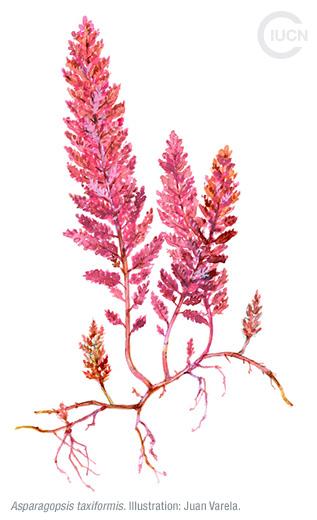

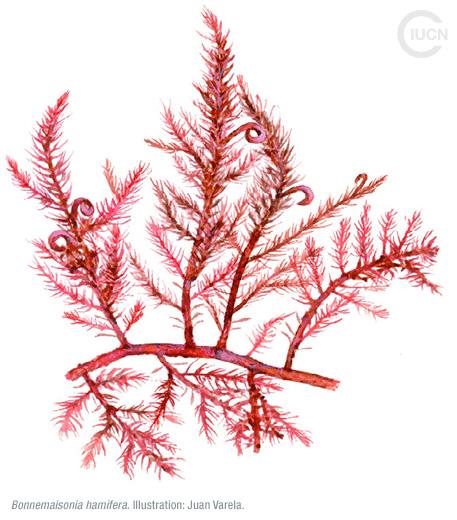
Native to Western Australia, this species was probably introduced into European waters through oyster aquaculture. Nowadays it is distributed throughout Europe in both the Atlantic and the Mediterranean basin, and it is highly invasive.
Unknown, but it probably outcompetes native species for space and light.
Pharmaceutical trials have shown the potential pharmaceutical compounds of A. armata that exhibites strong activity against fish pathogenic bacteria.
Altamirano M., Román A., De la Rosa J. C., Barrajón-Mínguez, A., Barrajón-Menech, A., Moreno, C., Arroyo, C. 2008. The invasive species Asparagopsis taxiformis (Bonnemaisoniales, Rhodophyta) on Andalusian coasts (Southern Spain): reproductive stages, new records and invaded communities. Acta Botánica Malacitana, Nº 33, 2008, 5-10.
Ní Chualáin, F., Maggs, C.A., Saunders, G.W. & Guiry, M.D., 2004. The invasive genus Asparagopsis (Bonnemaisoniaceae, Rhodophyta): molecular systematics, morphology, and ecophysiology of Falkenbergia isolates. Journal of Phycology 40: 1112-1126.
